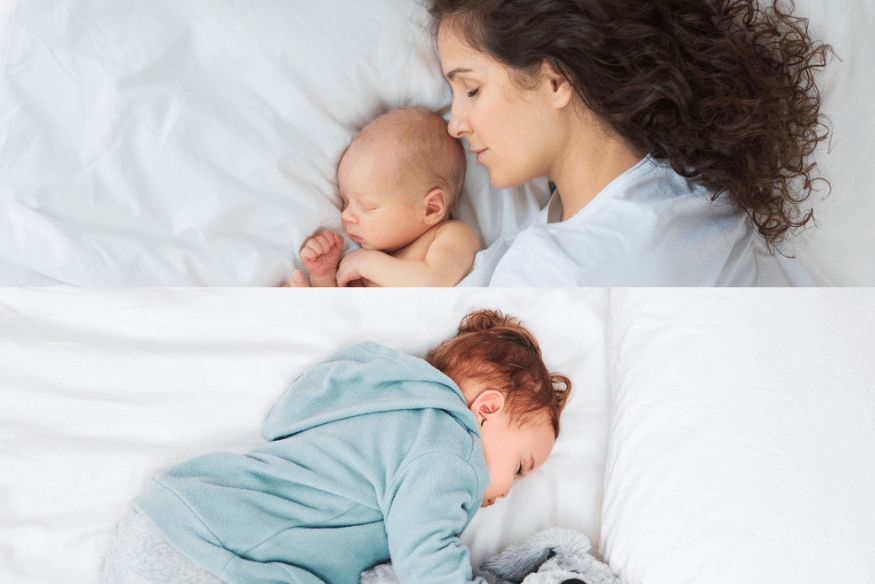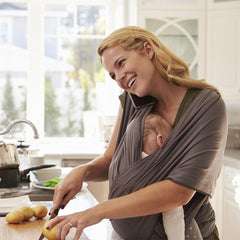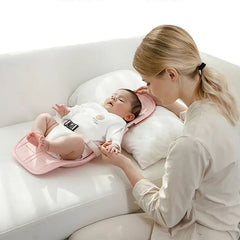Co-Sleeping vs. Independent Sleeping: Pros and Cons
Understanding Co-Sleeping

Co-sleeping, where your baby sleeps in your bed or in close proximity, has been a traditional practice in many cultures. It promotes bonding and makes nighttime feedings easier. Parents often feel more connected and can respond quickly to their baby's needs.
Pros of Co-Sleeping:
- Enhanced bonding between parent and baby.
- Convenient for nighttime feedings and comforting.
- Easier to monitor your baby's well-being.
Cons of Co-Sleeping:
- Increased risk of accidental suffocation or Sudden Infant Death Syndrome (SIDS).
- Potential disruptions in parental sleep.
- Long-term dependency on sleeping with parents.
Exploring Independent Sleeping

Independent sleeping involves placing your baby in their own crib or bassinet, often in a separate room. This method encourages self-soothing and can lead to more restful sleep for both baby and parents.
Pros of Independent Sleeping:
- Reduced risk of SIDS and suffocation.
- Establishes healthy sleep habits early on.
- Promotes independence and self-soothing skills.
Cons of Independent Sleeping:
- Initial difficulty in soothing and comforting your baby.
- More challenging for nighttime feedings.
- Less immediate bonding during sleep hours.
Key Considerations for Choosing
Choosing between co-sleeping and independent sleeping depends on your family's values, cultural background, and individual circumstances. Safety should always be the top priority, followed by what promotes the best sleep environment for your baby.
Practical Considerations
Space and Logistics Consider the layout of your home and the available space in your bedroom. Co-sleeping might be challenging in a smaller space, while a separate nursery for independent sleeping requires a dedicated room and monitoring equipment.
Lifestyle and Work Schedules Your family's lifestyle and work schedules play a crucial role in deciding the sleeping arrangement. If you have demanding work hours, co-sleeping might make nighttime care easier. Alternatively, if you value personal space and uninterrupted sleep, independent sleeping might be a better fit.
Pro Tip: To ease the transition from co-sleeping to crib, start with nap times in the crib to help your baby adjust gradually.
Recommended Sleeping Products
For Co-Sleeping: Multifunctional Electric Rocking Chair for Baby
For Independent Sleeping: Cartoon Design Washable Baby Crib

TRY NOW: CARTOON DESIGN SLEEPING CRIB
This crib offers a safe and cozy space for your baby to sleep independently. Its fun cartoon design makes it an appealing addition to the nursery.
Key Features:
- Soft and Breathable Materials: Ensures comfort and airflow for baby's comfort.
- Washable Design: Easy to clean and maintain, promoting hygiene and freshness.
- Portable and Lightweight: Ideal for travel or moving between rooms.
- Secure Sleeping Environment: Provides a safe and enclosed space for uninterrupted sleep.
- Adorable Design: Adds a playful touch to the nursery while offering a cozy retreat for baby.
Conclusion
Whether you choose co-sleeping or independent sleeping, prioritize safety and your baby's comfort. Every family is different, so trust your instincts and choose the sleep arrangement that works best for you and your little one. For more tips on transitioning to a crib and understanding your baby's sleep needs, check out our related articles:
Sleep well, parents! Your journey with your baby's sleep habits is an important part of their early development and your family's well-being.



















